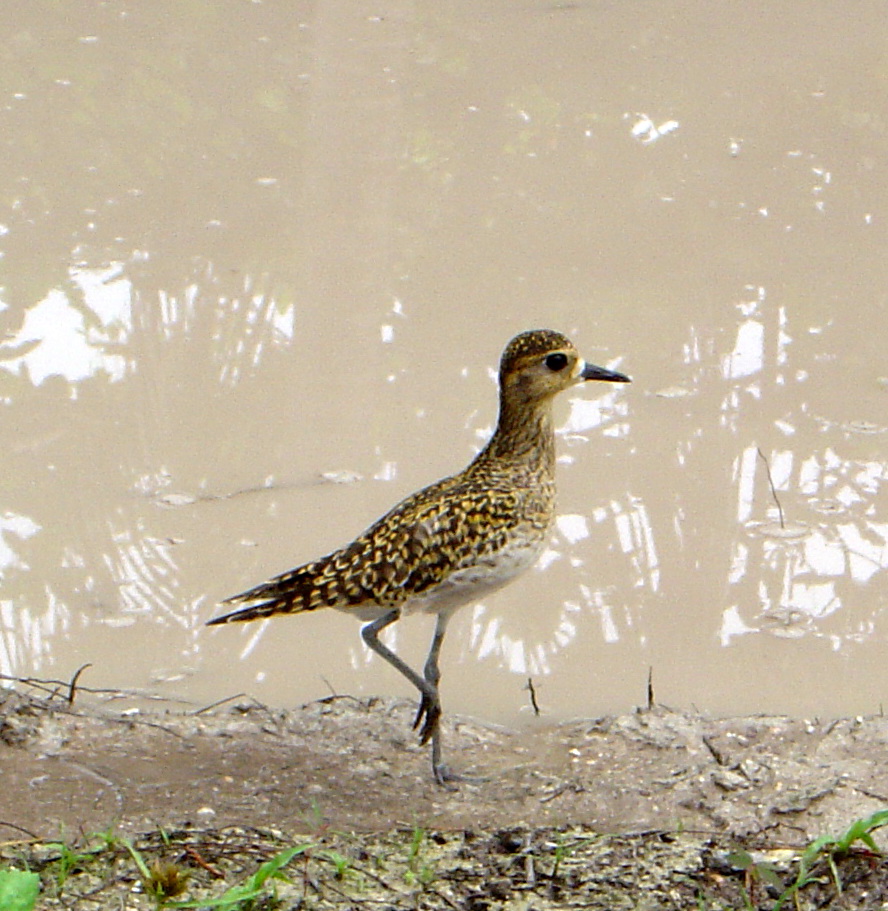Published in the Ocean Watch column, Honolulu Star-Advertiser © Susan Scott
Monday, September 3, 2012

A Kolea in winter plumage. ©Susan Scott
I don’t have many traditions in this column, but writing about the comings and goings of kolea, the migratory shorebirds also known as Pacific golden plovers, is becoming one of them. After my recent report on the birds’ return, the mail poured in.
Thank you, fellow lovers of plovers, for the stories about, photos of and comments regarding our favorite feathered wild pets.
Hot on the heels of the kolea’s arrival is another of my favorite end-of-summer subjects, Labor Day. When I was 11, my mother gave birth to my brother on Labor Day. Family jokes about my mom taking the holiday a little too seriously stuck with me, and since then the day has had a double meaning. Besides commemorating the workers of this country, I also consider the day a celebration of the supreme labor, that of organisms continuing their species.
One noteworthy reproductive effort is that of the female cowrie snail. After laying eggs in a reef crevice, female cowries sit on them up to four weeks until they hatch.
Usually, cowries spend their days resting in rock and coral cracks, and their nights grazing on seaweed, sponges or other attached creatures. Twenty-eight days is a long time to be stuck in one spot without food or exercise, but such is the sacrifice of moms.
And dads. Among fish, some males bear the baby burden. Of those, the sea horses are the best known.
A male sea horse receives its mate’s eggs in a pouch in his belly. There he fertilizes the eggs and carries them for 10 to 50 days (varies with species) until out pop dozens of miniature, free-swimming sea horses.

A pregnant male seahorse, Oahu. ©Susan Scott
Less well-known is the fact that the males of all species in the sea horse family (Syngnathidae) incubate their eggs. Family members are the leafy and weedy seadragons and pipefish, 2- to 5-inch-long fish that look like skinny, stretched-out sea horses.
Female seadragons attach their eggs to the underside of their mates’ tails. Male pipefish can be either tail or pouch brooders. Hawaii hosts no seadragons, but we do have six pipefish and three sea horse species.
People often ask if Hawaii’s sea horses are endangered. Yes. Sea horses are threatened worldwide due to demand from traditional Chinese medicine, the stocking of home aquariums and the destruction of habitat.
If you’re lucky enough to see a sea horse in the wild, you can help it by being awed at a respectful distance. Stressed males give birth prematurely and the babies die.
Last week I took a picture of my favorite wild marine pet, a pregnant sea horse that I visit often on an Oahu reef. I’m hoping that today, on Labor Day, he will have the ultimate work experience: that of giving birth.
©2012 Susan Scott